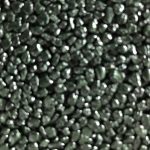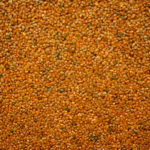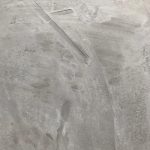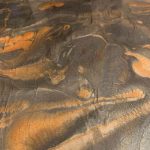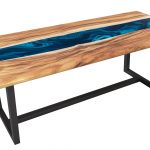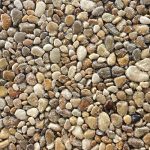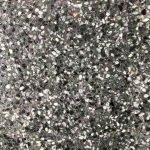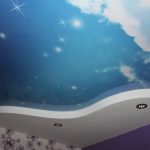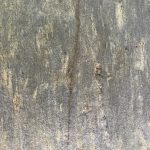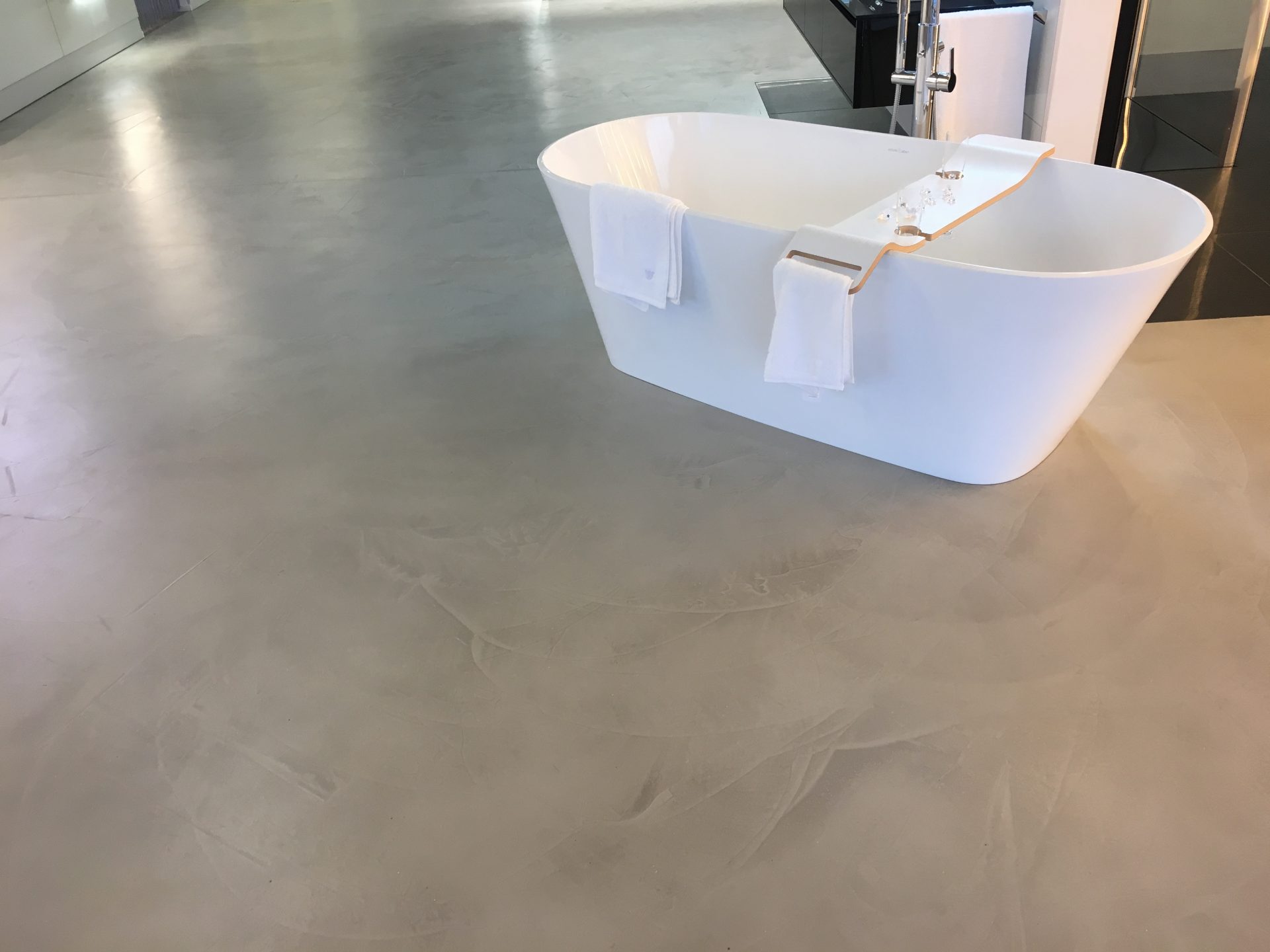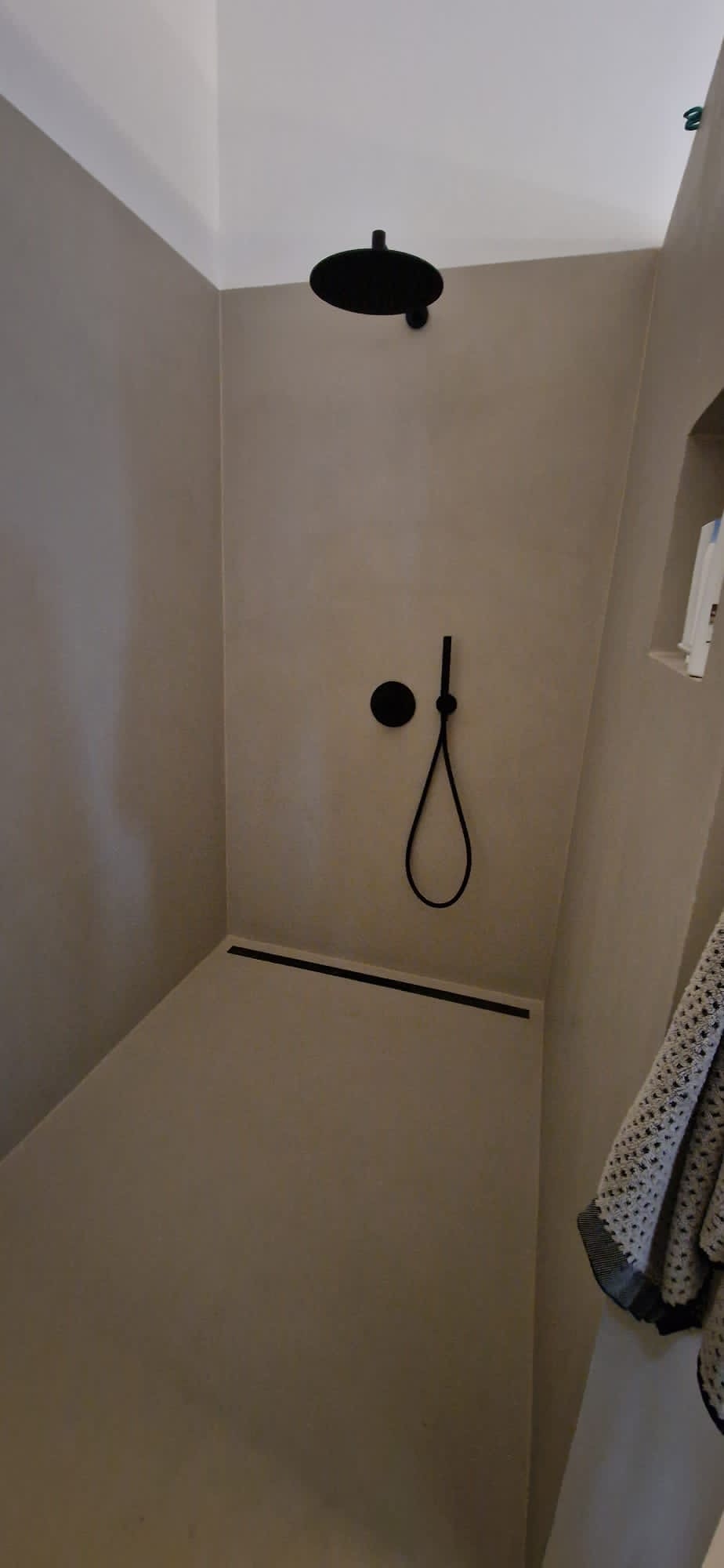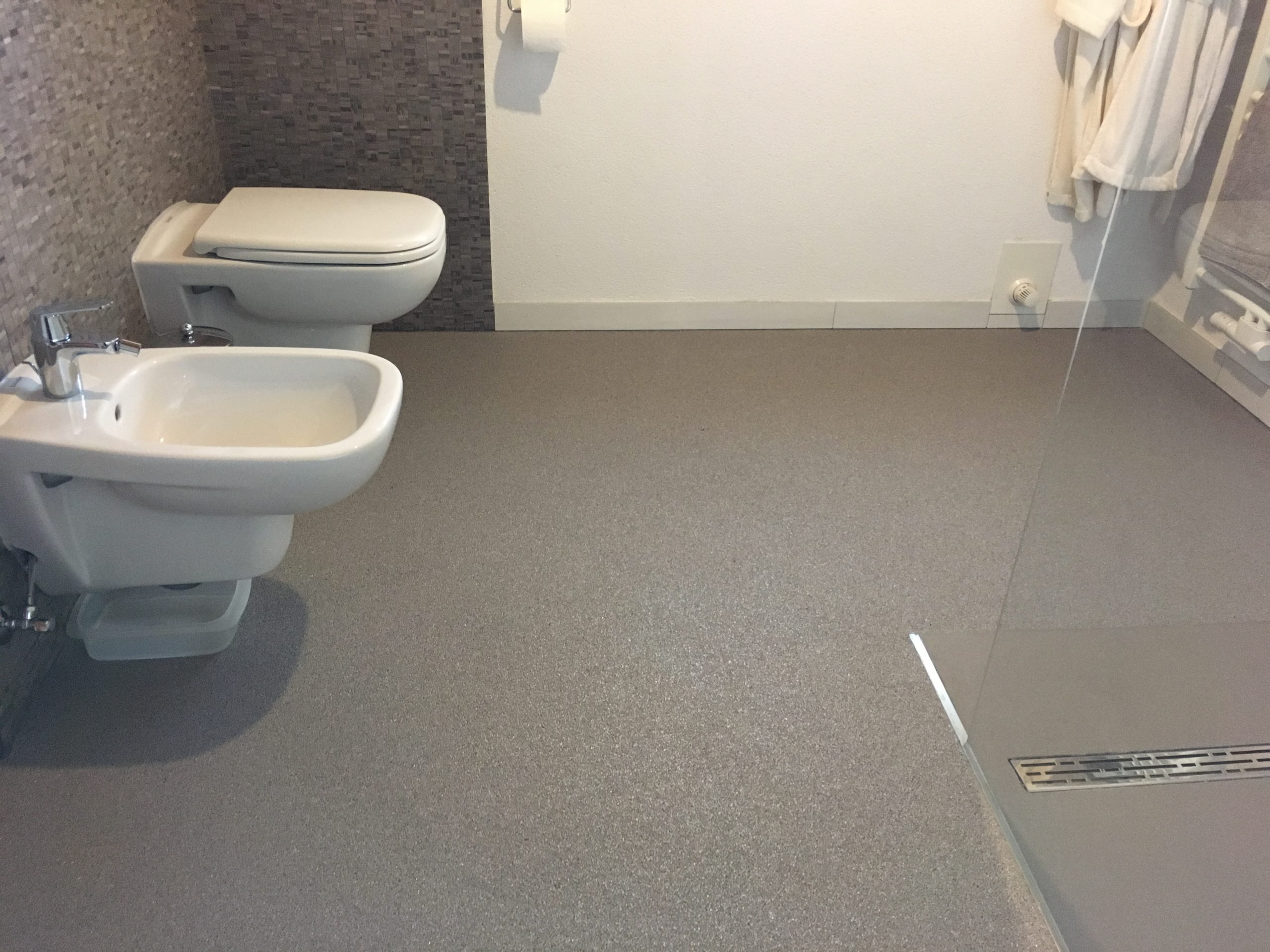Whether indoors, on balconies or on steps – the right primer is essential! It gives the stone carpet optimum grip on the substrate. Accordingly, the right stone carpet primer should always be selected for the respective substrate material.
Contents
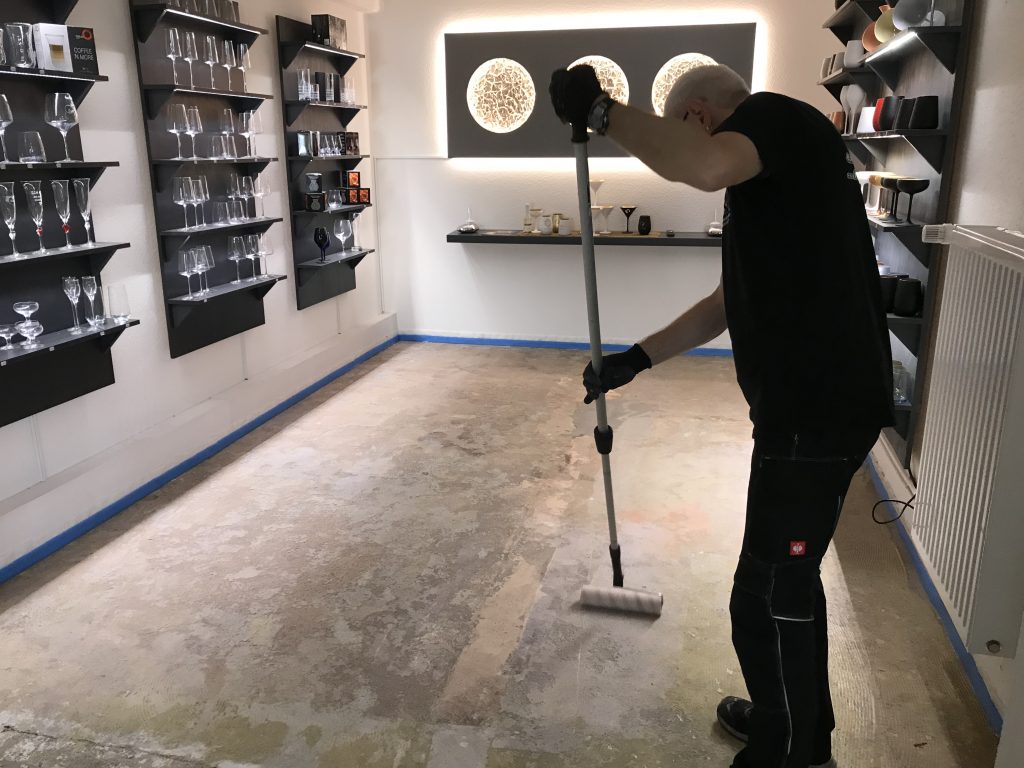
Different substrates require different stone carpet primers This is why the right choice of stone carpet primer is so important
No matter how well the stone carpet is laid, the durability of the floor ultimately depends on the primer. The reason for this is simple: different substrate materials and areas of application place different demands on the surface. For example, a screed surfacen should be prepared differently to wooden floorboards or an area with tiles. Wooden floors, for example, are provided with a glass fiber mat that is filled with an epoxy resin compound.
The aim is always to create the optimum bond between the gravel layer and the substrate. It is therefore advantageous to use quality products that are absolutely compatible with each other. Quarzkiesboden Zimmermann offers carefully selected stone carpet primers for its own Qubo® gravel coatings. This means that installation companies have a reliable supplier for the complete system. The product range includes single and multi-component primers for indoor and outdoor use, for tiles, wood and much more.
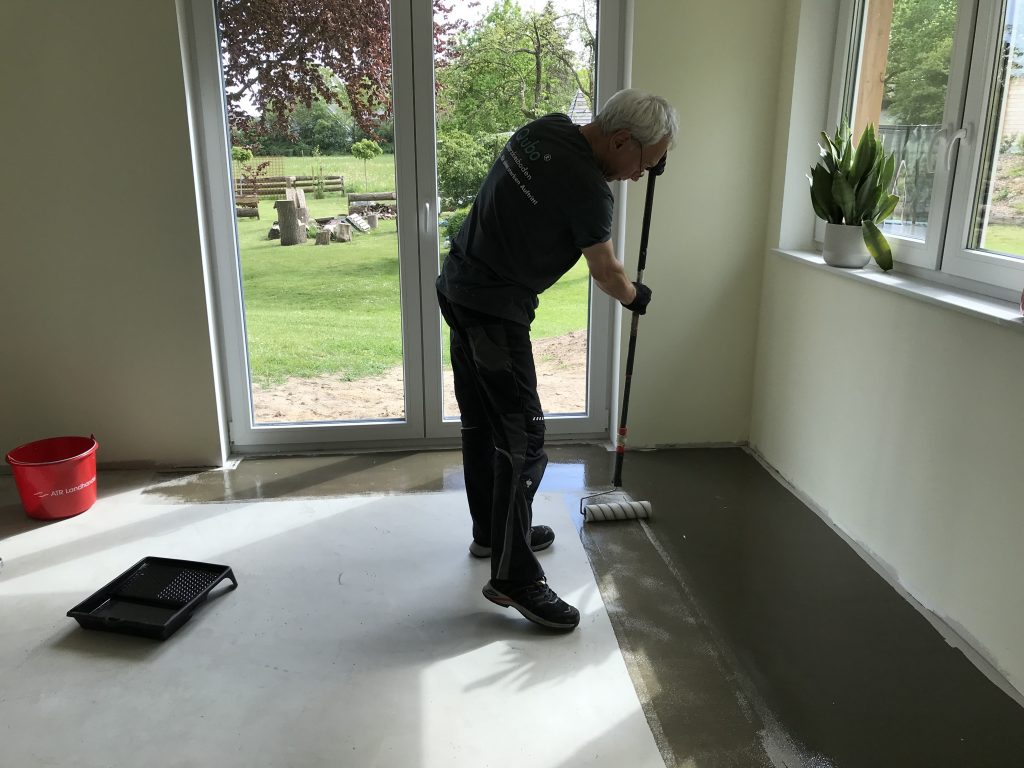
Qubo® STG - the stone carpet primer EP primer layer for normal to absorbent substrates
Qubo® STG is the quality standard among stone carpet primers. The two-component epoxy resin-based system produces a viscous liquid that can be rolled on or applied with a squeegee. The choice of tool depends on the size of the surface to be primed: while the primer is traditionally applied with a roller on small surfaces, many installers use a squeegee on large surfaces. This way, more square meters can be primed in less time.
With Qubo® STG, concrete and stone substrates can be optimally prepared for installation. The stone carpet primer is used here to remove the surface’s absorbency. After priming, the installation resin bonds with the primer resin instead of being absorbed by the substrate.
Qubo® STG also adheres to smooth surfaces such as tiles and – sprinkled with fine quartz sand – provides a primer layer on which the gravel can be easily filled. The time factor also plays a role here: while Qubo® SGF is usually used for small areas such as bathrooms and kitchens – more on this in the next paragraph – the use of Qubo® STG with quartz sand in large kitchens or exhibitions can be worthwhile in terms of time.
A surface primed with Qubo® STG is ready for laying the gravel coating the following day at around 20°C.
Qubo® SGF - the ideal stone carpet primer for tiles 1-component liquid primer for coating tiles
Qubo® SGF is used to lay a stone carpet directly on tiles. The one-component liquid coating is characterized by its low consumption, easy application and fast drying time. The material is applied evenly to the entire tiled surface with a roller and dries within 30 minutes. This means that both priming and laying can be carried out on the same working day, which makes better use of working time, especially on smaller areas.
Qubo® SGF contains a fine-grained additive that turns the smooth tile surface into a structured adhesive base. A stone carpet can be optimally laid on this structure.
Qubo® SGF can also be used on absorbent substrates. For this purpose, the primer is diluted with water up to a ratio of 1:1 and applied as usual with a roller. It should be noted that the adhesion properties and stability of the stone carpet primer are reduced by dilution. Accordingly, an epoxy resin primer such as Qubo® STG is preferable in garages and industrial environments. However, diluted Qubo® SGF is a quick and inexpensive alternative in living spaces and on surfaces subject to normal wear and tear.
Qubo® SGN – spezielle Steinteppich Grundierung für feuchte Untergründe 2K-Spezialgrundierung für ölige und feuchte Estrichflächen
The substrate is not completely dry on every construction site. Occasionally it is necessary to work on surfaces that are still damp. Qubo® SGN is available for these purposes. This epoxy resin-based stone carpet primer can also be applied to cementitious substrates that have been penetrated by oil.
Anyone who has tried to remove deep-seated oil deposits from a screed knows that simple cleaning is not enough. Even when cleaning with industrial and wet vacuum cleaners, it is often not possible to completely remove the liquid from the depths.
Surface cleaning of oily surfaces is sufficient preparation for Qubo® SGN. The mixture of water, oil and cleaning agent is not vacuumed off, but removed from the surface with a floor squeegee. Qubo® SGN is then applied to the still damp surface.
The system is open to diffusion so that rising water vapor can be released into the environment. Typically, the next work step can be carried out the following day.
Which work step follows the stone carpet primer? Sealing in outdoor areas, laying in indoor areas
As no waterproofing is required indoors, the laying of the top floor can begin immediately after the stone carpet primer.
In outdoor areas, environmental factors such as rising ground moisture and rain play an important role, making waterproofing absolutely essential. Zimmermann quartz gravel flooring offers two systems that are intended for different areas of application: Weber D2 and Qubo® PUDS.
Weber D2 is a flexible waterproofing slurry used for waterproofing exterior surfaces such as balconies and terraces. After mixing the components, the material is applied in two work steps. Weber D2 also bridges cracks with a width of more than 1 mm. The sealing layer is completely dry after one day, but can be walked on after four hours. Weber D2 is a reliable diffusion-open seal.
A system certified in accordance with ETAG 005 is required for sealing floor surfaces above living areas. This is where Qubo® PUDS comes into its own. The system consists of two layers of liquid foil with an integrated fleece insert.
Just like the right waterproofing, the right choice of stone carpet primer is also an important step on the way to an optimally laid stone carpet and …
… for a strong appearance!
Link collection
- Stone carpet product page
- Worth knowing: What is screed?
- Worth knowing: Buy gravel coatings
- Worth knowing: Bathroom design
- Worth knowing: Coating kitchens
- Worth knowing: Laying gravel floors in 6 steps
- Worth knowing: Applying a gravel coating to tiles
- Worth knowing: Robust floor system for garages
- Worth knowing: Stone carpet on balconies
- Worth knowing: Coating terraces with gravel
- Wissenswertes: Quarz- und Marmorkies auf Außenflächen
- Worth knowing: Industrial flooring
Non-binding cost estimate and advice
First and foremost, the area of application determines the pricing. However, the costs depend on many different factors, including
- the type of binder required
-
from the stone carpet primer
-
the choice of skirting boards, for example if these are also made of quartz gravel
-
from the labor costs of the professional installer
-
the size of the area to be laid
In outdoor areas, the costs are higher because the substrate is sealed and a special binder is used.
The stone carpet primer forms the bonding bridge between the building structure and the gravel floor. Appropriate stone carpet primers make it possible to apply the gravel floor to almost any substrate, for example tiles, wood, stone, concrete and metal.
On tiles and metal, for example, a stone carpet primer is required to give the smooth surface stability during installation.
On porous stone and absorbent screed, the appropriate stone carpet primer must be used to prevent the binder from being absorbed, which is intended to ensure the pebbles are held in place.
To coat wooden planks with a gravel floor, the movement of the planks against each other must first be stopped. To do this, the installer first applies a mesh mat to the wooden floor. Once the filler has dried, the gravel floor is applied.
In most cases,
colorquartz
or
marble gravel
is used for laying gravel floors. However, there are considerable differences in quality here, for example in the amount of dust in the material or in the types of marble used.
Colored quartz is available in the following grain sizes:
-
1–2 mm
-
2–3 mm
- 3–4 mm
Marble gravel is available in the following grain sizes:
-
1–4 mm
-
4–8 mm
- 8–15 mm
Of course, the choice of gravel grain size has an effect on the laying thickness of the gravel floor.
The laying thickness of the floor depends on the gravel grain size and the area of application. Normal quartz gravel with a grain size of 2 – 3 mm can be laid indoors with a thickness of 6 mm.
An installation thickness of 8 mm is used outdoors and on stairs indoors due to the load.
Finally, 10 mm of material is applied to external stairs.
Vertical surfaces such as risers, skirting boards and walls are always laid in 6 mm.
The larger the grain size of the gravel, the higher the installation height of the floor covering. This means that more gravel and additional binder is required per m². The price increases accordingly.
Especially in kitchens and
bathrooms
, the gravel floor should be fitted with a pore seal for hygienic reasons. It prevents leaked, sticky liquids from penetrating the stone structure. While it is difficult to remove liquids that have penetrated an open floor, the pore seal enables
effortless cleaning
by wet mopping.
Dogs, cats and co. feel much more comfortable on the textured surface than on smooth floor coverings such as tiles or laminate, as they do not slip on stone carpets. However, it is advisable to cover the floor with a pore seal to ensure an easily wipeable surface.
terrace
is the durable alternative to other floor coverings. The system forms a non-slip floor that is 100% frost-proof and UV-resistant
-
High drainage capacity due to open-pored structure
-
Quick drying in sun and wind
-
Easy to clean and self-cleaning
-
100% frostsicher
-
UV-stabil
- Gentle, massage-like walking comfort when walking barefoot
The most important thing when laying gravel floors in outdoor areas is preparing the substrate. This ensures the durability of the finished floor.
One reason for this is that a subfloor with a professionally applied stone carpet primer has significantly increased adhesion for the gravel that is filled on top. Secondly, a sealing layer keeps rainwater away from the building structure, for example, which supports long-term durability.
Options for sealing building structures are
- Sealing using a resin seal with a sealing membrane
- Sealing using a flex sealing slurry
In order to drain rainwater effectively, the floor covering is laid with a gradient of at least 1.5%.
In outdoor areas, the stone carpet is always laid as an open system to ensure drainage capacity and thus the run-off of rainwater. This makes them 100% frost-proof and therefore ideal as
pool surrounds
and as a covering for balconies, terraces, entrance areas, outdoor steps and loggias.
We would like to point out that we do not recommend stone carpets in the direct shower area. The reasons for this can be found in the basic structure of the floor and the wet room. Just as the tile adhesive under a tile does not form a completely flat surface without air pockets, pores also remain underneath a sealed stone carpet.
If, after years, a silicone seam leaks and water from a fitting, for example, penetrates between the wall or floor covering and the seal of the building structure, the transparent pore seal reacts with the water and forms white stains. As these occur underneath the seal, they cannot be wiped away or removed by drying.
This is why insurance companies do not classify stone carpets as suitable for wet rooms and do not replace such coatings in the event of damage. We therefore recommend microcement coatings for showers. With these, there is no water-bearing layer between the floor covering and the substrate, so there is no risk of moisture penetration. Due to the many customization options for microcement, it can also be combined with stone carpeting. Just get in touch with us.
stairs
can be easily renovated both indoors and outdoors. Coating your old staircase with stone carpet gives you a new design without having to invest in a new staircase. Renovation is carried out without any chiselling or demolition work. Staircase renovation significantly reduces or even completely eliminates noise. Of course, stone carpeting is also ideal for new staircases and entrance areas.
A staircase coated with quartz or marble gravel already has a slip resistance class of R10 after installation.
The slip resistance class can be increased to R11 or R12 using special sealants.
Depending on the type of staircase, renovations are possible within 3-5 days.
Please contact us to discuss the details
.
All our gravel floors are based on natural stones. This is why many people refer to them as natural stone carpets.
The gravel is available natural and colored.
A professionally laid floor with a correctly applied stone carpet primer can practically only be destroyed by chemical stress or under the influence of enormous mechanical forces. It can therefore be assumed that a well-maintained floor will last for several decades.
A separating layer can be worked into the floor coating during installation. This additional step during installation makes it very easy and effortless to remove the gravel flooring.
Mica additives and various gemstones can be added, but this represents a further cost factor.
FAQ
Details and facts, key figures and explanations – here you will find answers to frequently asked questions about our Qubo® coating systems. If any details remain unclear, simply contact us at . We will be happy to advise you personally and promptly.

